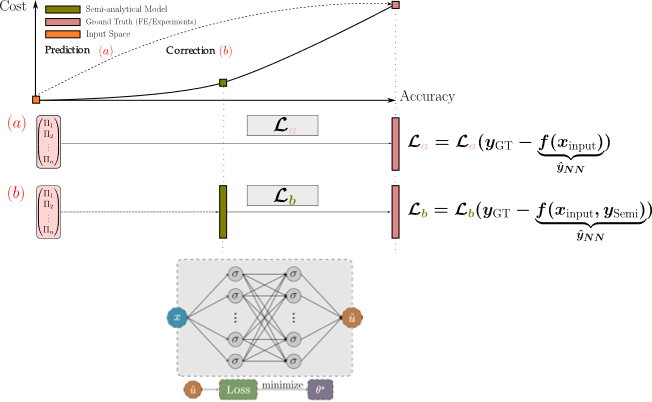Duration: 2023-2027
Funding: Tata Steel - M2i
ABOUT THE PROJECT
This project aims to develop a comprehensive lateral flow model to ensure consistent process control in the hot rolling process. To achieve this, rapidly advancing machine learning approaches will be employed to create a hybrid framework that bridges the gap between full-field high-fidelity finite element simulations and analytical formulations that incorporate partial physics of the problem. This hybrid discrepancy modelling approach seeks to leverage the accuracy of high-fidelity finite element simulations while benefiting from the speed of analytical formulations proposed for the spread phenomenon in hot rolling applications. Moreover, the enhanced control over product geometry, particularly width, enabled by implementing the developed model from this project, will:
- Enable production across a broader range of dimensions.
- Reduce the need for mill trials during the development of new hardware and materials.
- Decrease rejection rates and subsequent losses.
- Consequently, lower CO2 emissions by avoiding the production of material that fails to meet dimensional specifications.
GOALS

The primary goal of this project is to establish a robust lateral flow model that ensures reliable process control in the hot rolling process. By integrating advanced machine learning techniques, the project aims to develop a hybrid framework capable of linking high-fidelity finite element simulations with analytical formulations that capture essential physical phenomena. This approach seeks to enhance the accuracy of process predictions while maintaining computational efficiency. Ultimately, the objective is to improve the understanding and control of the spread phenomenon in hot rolling, enabling more precise and efficient industrial applications.





